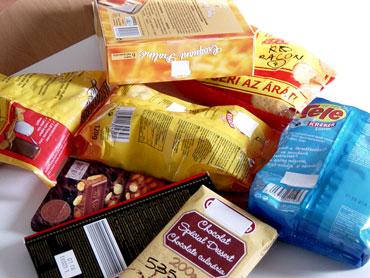
Today, the case number of food allergy increases. It concerns the adults but children are particularly concerned, peanut being the highest risk.
The European Directive 2003/89/EC, a modification of the European Directive 2000/13/EC on the food labeling, and modified by the 2007/68/EC Directive asks for detailed list of the allergens cited in the annex IIIa.
L'éducation nationale a pris en compte ces éléments (Bulletin Officiel de l'Education Nationale - n°41- Nov 99) par l'accueil individualisé des enfants.
The food industry manager faces to a supplementary risk that is to be contained. The industrials must take into account these elements in their risk analysis and reinforce their traceability, adapt the raw material controls taking care of cross contamination risks.
So it is important to have performing analytical tools to identify a potential allergenic contaminant.
Phylogene is expert from the WG12 of the CEN in charge of the allergen detection methods standardization
-Ingredients referred to in Article 6(3a), (10) and (11)
-Cereals containing gluten (i.e. wheat, rye, barley, oats, spelt, kamut or their hybridised strains) and products thereof
-Crustaceans and products thereof
-Eggs and products thereof
-Fish and products thereof
-Peanuts and products thereof
-Soybeans and products thereof
-Milk and products thereof (including lactose)
Nuts i.e. Almond (Amygdalus communis L.), Hazelnut (Corylus avellana), Walnut (Juglans regia), Cashew (Anacardium occidentale), Pecan nut (Carya illinoiesis (Wangenh.) K. Koch), Brazil nut (Bertholletia excelsa), Pistachio nut (Pistacia vera), Macadamia nut and Queensland nut (Macadamia ternifolia) and products thereof
-Celery and products thereofMustard and products thereof
-Sesame seeds and products thereof
-Sulphur dioxide and sulphites at concentrations of more than 10 mg/kg or 10 mg/litre expressed as SO2
-Lupin and products thereof, molluscs and products thereof have been added by the Directive 2007/68/EC
Obligation of GMO labelling has been established by different texts published between 1998 and 2000 (rules 1139/98, 40/200 and 50/2000). Those European Rules obliged to label “product made with genetically modified (name of the specie involved)…” for human food products. Then the European Directive 2001/18 EC was published and introduced the GMO traceability notion at every stage of food production and commercialization. Finally this directive has been recently completed by the rules 1829/2003 and 1830/2003 which introduced a labeling threshold at 0.9% for authorized events and at 0.5% for non authorized events but having a positive response from the EFSA experts.
* Phylogene is expert in the AFNOR standardization commission